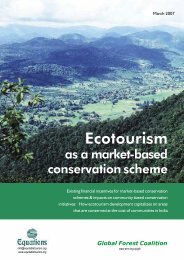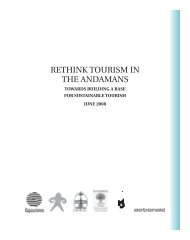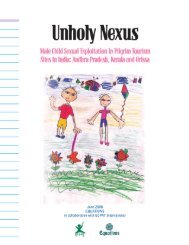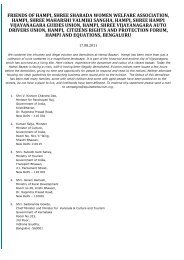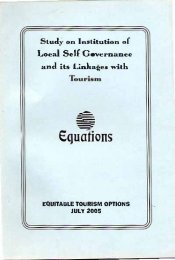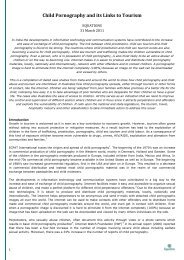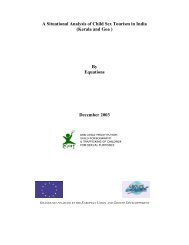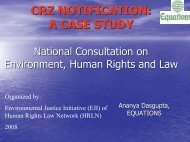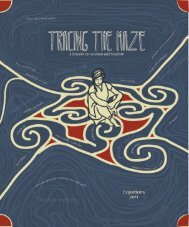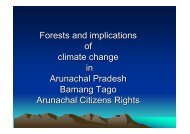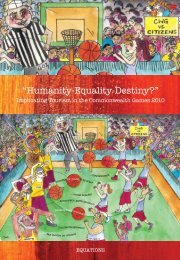Nilgiris Biosphere Reserve - Equitable Tourism Options
Nilgiris Biosphere Reserve - Equitable Tourism Options
Nilgiris Biosphere Reserve - Equitable Tourism Options
Create successful ePaper yourself
Turn your PDF publications into a flip-book with our unique Google optimized e-Paper software.
Organisation. The Convention was formally adopted by the member states<br />
on 22 May 1991 in Nairobi and it was opened for signature at the United<br />
Nations' Conference on Environment and Development (Rio Summit) held at<br />
Rio de Janeiro between 3fd and 14th June 1992. The Convention was first<br />
signed by 157 states at the Rio Summit and then by another nine states. As<br />
per Article 36 of the Convention, thirty ratifications, acceptances, approvals<br />
or accessions were needed for the Convention to be enforced and this took<br />
place on 29 December 1993. By 31 January 1995, 179 states had signed the<br />
Convention and 102 states have ratified, acceded or approved it. India<br />
ratified the Convention in 1994.The objectives of the Convention on<br />
Biological Diversity are:<br />
a. The conservation of biological diversity<br />
b. The sustainable use of its components<br />
c. The fair and equitable sharing of benefits arising out of utilisation of<br />
genetic resources<br />
The Convention on Biological Diversity and <strong>Tourism</strong><br />
The tourism topic was discussed at the Ministerial roundtable at the Fourth<br />
Conference of the Parties COP-4 to the Convention on Biological Diversity in<br />
May 1 998 at Bratislava for the firsttime. Considerable debate existed on how<br />
seriously tourism would feature in future negotiations on biodiversity.<br />
However, uptake on tourism issues by the UN Commission on Sustainable<br />
Development in 1999 injected new clarity to the process of strengthening<br />
international standards for the tourism industry. The first substantive<br />
discussion on tourism and biodiversity occurred during the Fourth meeting of<br />
the CBD's SubSidiary Body on Scientific, Technical & Technological Advice<br />
(SBSTTA-4) in Montreal in June 1999. Here, Parties to the CBD began to<br />
exchange views on how to integrate biodiversity into national policies,<br />
programmes and activities for the tourism sector.<br />
A major event concerning tourism in the interval between COP-4 and<br />
SBSTTA4 was the declaration by United Nations of 2002 as the 'International<br />
Year of Ecotourism.' While this announcement promised to focus more<br />
attention on tourism, it was to be assumed to promote biodiversity<br />
conservation. Organisations working on the ground i.e., at the ecosystem<br />
level continue to document the devastating social, cultural, and ecological<br />
losses linked to most types of ecotourism, without any real opportunity or<br />
authority to convey this information to the government<br />
<br />
Equa, ,,,<br />
Noo : Fmg Gwry 46



